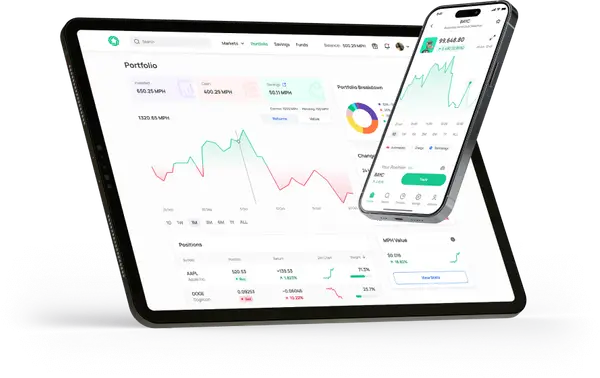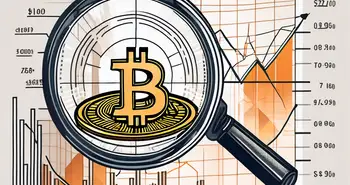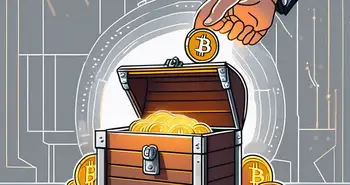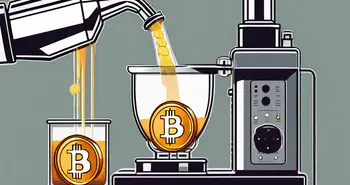Bitcoin Halving 2024 Prediction: What to Expect Post-Halving

As the Bitcoin Halving 2024 draws nearer, with less than a month left until the event, excitement is palpable within the crypto community. Countdown timers set for April 20th serve as reminders of the approaching milestone, adding to the anticipation. While some envision celebratory confetti and soaring prices as the countdown concludes, past events like the Bitcoin ETF approval in January have demonstrated that market reactions can be more nuanced.
Prepare for the Bitcoin Halving 2024 with a balanced outlook. Drawing from historical Halving data, expert commentary, and market insights, our analysis aims to equip you with the necessary guidance to confidently navigate the post-halving landscape, all while avoiding excessive hype.
Understanding Bitcoin Halving
What is Bitcoin Halving?
Bitcoin Halving is an integral part of the Bitcoin network's design. It is a preprogrammed event that occurs approximately every four years, or after every 210,000 blocks have been mined. During this event, the number of new Bitcoins created by miners as a reward for validating transactions is reduced by half. This reduction in the supply of newly minted Bitcoins effectively decreases the rate at which new Bitcoins enter circulation.

Why Does It Matter to the Market?
Bitcoin halving occurs as part of the cryptocurrency's protocol, with the primary objective of regulating the supply of new bitcoins entering circulation. This scarcity is what sets Bitcoin apart from traditional fiat currencies, as there will only ever be 21 million Bitcoins in existence. The controlled and predictable issuance of new Bitcoins through halving events ensures that the digital asset remains deflationary in nature, unlike government-issued currencies that can be subject to inflationary pressures.
To illustrate the significance of Bitcoin halving, let's draw a comparison to traditional financial systems, particularly in the context of money printing. In the conventional financial world, central banks have the authority to print fiat currency, essentially increasing the money supply. While this may provide short-term relief and stimulate economic activity, it also carries the risk of devaluing the currency and fuelling inflation over time. Critics argue that excessive money printing, especially in response to crises like the COVID-19 pandemic, can erode the purchasing power of the currency and undermine long-term economic stability.
In contrast, Bitcoin's halving mechanism serves as a built-in safeguard against such inflationary pressures. Rather than relying on the discretion of central authorities, Bitcoin's monetary policy is predetermined and transparent. By systematically reducing the rate of new coin issuance, Bitcoin halving reinforces the cryptocurrency's deflationary nature and reinforces its appeal as a store of value.
The History of Bitcoin Halving
The First Bitcoin Halving 2012
The initial halving took place on November 28, 2012, marking a significant milestone in Bitcoin's history. During this event, the block reward was reduced from 50 BTC to 25 BTC. At the time of the halving, the price of Bitcoin stood at a modest $13. Prior to this event, Bitcoin remained relatively obscure, known mainly to a niche group of cypherpunks who had been involved in its early development. However, following a remarkable surge in price, peaking at over $1,000 the following year, Bitcoin started to attract broader attention. Despite this newfound recognition, the cryptocurrency was largely dismissed by mainstream observers. As the price retreated to around $200 in 2015, critics declared the demise of Bitcoin, a trend that would persist in subsequent market cycles.
Bitcoin Halving 2016
The second halving occurred on July 16, 2016, signaling another pivotal moment for Bitcoin. The block reward was slashed to 12.5 BTC during this event. Bitcoin's price at the time of the halving stood at $664. The subsequent year witnessed an unprecedented surge in Bitcoin's value, reaching a peak of $17,760. This period also saw a surge in media attention and criticism directed towards the cryptocurrency space. The rise of altcoins and initial coin offerings (ICOs) led to a proliferation of scams and failed projects within the crypto ecosystem.
Bitcoin Halving 2020
On May 11, 2020, amidst the global COVID-19 pandemic, Bitcoin experienced its third halving event. The block reward was reduced to 6.25 BTC. Despite the economic turmoil caused by the pandemic, Bitcoin's price pattern remained consistent with previous cycles. Remarkably, prominent investors such as Paul Tudor Jones and Michael Saylor publicly announced their investments in Bitcoin during this time. In each of these halving cycles, Bitcoin exhibited a similar price pattern: a significant rally prior to the halving, followed by a brief correction and consolidation period, before entering a major bull run phase. This trend typically culminated in a peak approximately 18 months after each halving event.
Bitcoin Halving 2024
Now it's time for today's 4th Bitcoin Halving Event. Expected to take place at block height 740,000, this halving event will see the block reward drop to 3,125 new BTC. As a result, the total supply of Bitcoin in circulation will increase to approximately 656,250 BTC.
With the 2024 Halving fast approaching, are you looking for a one-stop platform where you can monitor Bitcoin's price with detailed charts, access AI-driven market insights, stay up-to-date with breaking crypto news, and trade with up to 10x leverage instantly? Look no further than Morpher. With it's features like user-friendly interface, fractional trading options and commission-free fee structure, Morpher invites you into a new era of trading. Join now to receive a sign-up bonus and start trading Bitcoin hassle-free!

Predictions for Bitcoin Halving 2024
As the 2024 Bitcoin Halving approaches, experts and analysts are making various predictions regarding its potential impact on the cryptocurrency market. The approval of Bitcoin Spot ETFs in January 2023 and the positive sentiment fueled by the upcoming Halving have propelled BTC to back-to-back all-time highs. After a brief period of market correction, it is currently stabilizing around $70,000.
In November, Standard Chartered doubled its earlier prediction of a $100,000 Bitcoin price, attributing the surge to the approval of multiple ETFs. Antoni Trenchev, co-founder of Nexo, foresees a significant rise to $100,000, with potential for even higher peaks in 2025. Michael van de Poppe shares a similar outlook, predicting a climb to $80,000 before the April halving, anticipating another ATH test.
Research firm Bernstein suggests a potential rise to $90,000 by year-end, with the April halving expected to have a marginal impact on Bitcoin's price. Tom Lee of Fundstrat Global Advisors aligns with Novogratz's ambitious forecast of $150,000, citing growing demand amidst limited supply post-halving. Michael Novogratz, CEO of Galaxy Digital, shares his belief in a substantial price increase to $150,000 post-halving, backed by a deep understanding of Bitcoin's evolving role. Fred Thiel of Marathon Digital Holdings predicts significant growth post-halving, envisioning Bitcoin reaching $120,000, driven by its limited supply and role as a store of value.
Despite the anticipation surrounding Bitcoin Halving, common misconceptions persist. Many believe that Halving will result in immediate price increases. However, while historical trends indicate post-Halving price hikes, these gains are not always instantaneous and are influenced by various factors beyond the event itself. On the other hand, some assume that the Bitcoin Halving is already priced in. While there may be anticipation leading up to the event, the complexity of market dynamics suggests that its full impact may not be entirely accounted for in advance.
The diverse range of predictions for the 2024 Bitcoin Halving reflects the complexity of the cryptocurrency market and the multitude of factors at play. While experts offer optimistic outlooks, forecasting significant price increases post-halving, it's crucial to acknowledge the inherent uncertainty and volatility of the crypto landscape.
As investors and enthusiasts eagerly anticipate the Halving event, it's essential to approach it with caution and skepticism, recognizing that market dynamics can often defy expectations. One way to navigate the uncertainty surrounding the Halving event is by conducting your own analysis, using tools such as candlestick patterns. This kind of anaylsis can provide valuable information about market sentiment and potential price movements. While historical trends may provide valuable insights, they do not guarantee future outcomes.
In conclusion, Bitcoin halving is a significant event in the Bitcoin ecosystem. Understanding its concept, history, process, and impact is crucial for anyone interested in cryptocurrencies. As an expert in the field, I can assure you that Bitcoin halving plays a vital role in shaping the cryptocurrency market and the future of Bitcoin itself. So stay informed, keep an eye on the approaching halving events, and embrace the exciting journey of Bitcoin!
FAQ about Bitcoin Halving
-
What is Bitcoin halving?
Bitcoin halving is an event that occurs approximately every four years, during which the block reward for miners is reduced by half. It helps control the inflation rate of Bitcoin and contributes to its scarcity.
-
How does Bitcoin halving impact the price of Bitcoin?
Bitcoin halving has historically been associated with price increases. The reduction in the rate of new Bitcoins entering circulation, coupled with growing demand, tends to drive the price of Bitcoin upward.
-
What role do miners play in Bitcoin halving?
Miners validate transactions on the Bitcoin network and earn block rewards in the form of newly minted Bitcoins. Bitcoin halving reduces their rewards and poses challenges for their profitability.
-
Can I predict when the next Bitcoin halving will occur?
While it is difficult to predict the exact timing of the next halving, online tools can provide estimated countdowns based on current block heights and block times. Factors such as network hash rate and mining difficulty influence the timing.
As you anticipate the next Bitcoin halving and consider its potential impact on your cryptocurrency investments, explore the innovative trading opportunities at Morpher.com. Embrace the future of investing on a platform that offers zero fees, infinite liquidity, and the ability to trade a wide array of assets, including Bitcoin. With Morpher, you can take advantage of fractional investing, short selling without interest fees, and up to 10x leverage to amplify your trades. Ensure your safety with a non-custodial Morpher Wallet and experience a unique trading environment built on the Ethereum Blockchain. Sign Up and Get Your Free Sign Up Bonus today to join the revolution in global trading with Morpher.

Disclaimer: All investments involve risk, and the past performance of a security, industry, sector, market, financial product, trading strategy, or individual’s trading does not guarantee future results or returns. Investors are fully responsible for any investment decisions they make. Such decisions should be based solely on an evaluation of their financial circumstances, investment objectives, risk tolerance, and liquidity needs. This post does not constitute investment advice.

Painless trading for everyone
Hundreds of markets all in one place - Apple, Bitcoin, Gold, Watches, NFTs, Sneakers and so much more.

Painless trading for everyone
Hundreds of markets all in one place - Apple, Bitcoin, Gold, Watches, NFTs, Sneakers and so much more.







